Category: Uncategorized
- What is a Silent Auction for Artwork Galleries?
- How Much Should the Starting Bid Be?
- Gift Cards at an Art Auction? Yes, But Make Them Look the Part
- Are Silent Auction Purchases Tax Deductible?
- Is This Even Legal?
- Going Online? Here’s How to Pull Off a Silent Auction Without the Physical Setup
- Where Do You Even Get Auction Items?
- A Few Extra Pointers Before You Go
- Final Thoughts
You’ve probably been to one of those art events where people mingle with a drink in one hand and a bidding pen in the other. Quietly scribbling down numbers, glancing over their shoulder while pretending they’re not watching the same painting. Yep, that’s a silent auction. And when done right? It can bring in solid money for your gallery without making things too formal or flashy.
Let’s unpack everything you need to know, from starting bids to tax questions, legal stuff, and even how to make gift cards look like VIPs on your auction table. We’ll also chat about how online auction softwares like Ultimate Auction can make the whole thing easy without taking up the tech headaches yourself.
What is a Silent Auction for Artwork Galleries?
A silent auction is a type of fundraising event where participants place their bids without any live announcements. Instead of shouting or raising paddles, guests walk around the gallery, view the displayed items, and write down their bids on a bid sheet placed near each item. These days, many galleries are also going digital with the help of auction marketplace software so that the guests can bid directly from their smartphones.
Why do silent auctions work so well for art galleries? Because they let the artwork do the talking. It’s not just about raising money. It’s about giving people time to appreciate the pieces. Guests can take their time, circle back to items that caught their eye, and bid without pressure. This relaxed format is great for art lovers who don’t want to be in a fast-paced or shouty environment.
Another reason is community engagement. People feel more involved when they participate and the auction benefits local artists. The event becomes more than just a sale. It’s an experience that creates a buzz. And let’s be honest, people love a good competition, even if it’s silent.
Silent auctions can also attract first-time buyers. They may not be ready to splurge thousands on a painting through a private sale, but put them in a friendly setting with wine, music, and an opening bid of $300? They might just jump in. That’s how you build new relationships and turn guests into collectors.
Special Offer – Limited Time Only!
Rev Up Your Savings: Get 10% off Essential Ultimate Auction Software!
Fill the form and receive directly to your mailbox a discount code.
"*" indicates required fields
How Much Should the Starting Bid Be?
Setting the right starting bid is one of those things that sounds simple but it can really affect how your auction performs. Too low and you risk undervaluing the piece. Too high and you scare away potential bidders before the first glass of wine is finished.
So how do you find the sweet spot? A common rule of thumb is to set the starting bid at 30% to 50% of the artwork’s fair market value. If a piece is worth $2,000, a starting bid of $600 to $1,000 makes sense. This range attracts interest while still respecting the value of the art. It creates room for the price to climb but doesn’t start so low that it feels like a yard sale.
Bid increments matter too. These are the minimum bids you can use to exceed the one which is currently going on. Usually, increments are around 10% of the item’s value but you can adjust based on the item type and expected demand. Having clear increments prevents people from outbidding each other by just a few bucks which can drag the whole process down.
One last thing. Always display the starting bid clearly on each item’s card or online page. Bidders should know exactly where the auction begins. Transparency builds trust and trust gets bids.
Gift Cards at an Art Auction? Yes, But Make Them Look the Part

Gift cards may not be the main attraction at your art gallery event but don’t underestimate their value. They’re easy to source (often donated), flexible for bidders, and they fill out your auction table with variety. People who aren’t ready to drop big money on a painting might be more inclined to bid on a dinner for two or a weekend spa visit.
But here’s the deal. Presentation is everything. A plain envelope won’t draw much attention. You’ve got to make the gift card feel like an experience. Display it with props that tell a story. A spa card? Add a soft towel, a couple of candles, maybe even a lavender sachet. A restaurant voucher? Set it beside a wine glass and a faux menu. Make it look and feel like a little window into the experience the bidder will have.
Framing the card or placing it on a decorative stand can also help it stand out. And don’t forget to include a printed description with all the details like the value, expiration date, and what’s included.
If you have multiple gift cards, consider something fun like a gift card tree or a themed basket. It makes your display more inviting and gives people more to talk about.
Gift cards also translate well online. Just make sure your images are clear and your descriptions are complete.
In short, treat gift cards with the same attention you give the art. Package them well and they’ll surprise you with how much they raise.
Are Silent Auction Purchases Tax Deductible?
Most people assume that buying something at a silent auction means they can write it off as a donation. That’s not always the case. If the bidder receives a tangible item (like artwork or a gift card), then technically they made a purchase not a donation.
That said, there is one scenario where a tax deduction can apply. If someone pays more than the item’s fair market value, the amount above that value might count as a donation. For example, if a painting is worth $1,200 and someone wins it for $1,500, the extra $300 could be tax-deductible. But this only works if your gallery is a registered nonprofit and the buyer gets a proper receipt.
So your job as the organizer is to be transparent. List each item’s fair market value and sale price, issue receipts that show the difference, and clarify which part (if any) is deductible.
Also worth noting. People who donate items to your auction may be eligible for a deduction too. For example, a local artist donating a painting could potentially claim the cost of materials. It’s always best to encourage donors to consult their tax advisor.
And don’t forget. Some states or countries have different rules. If you’re in doubt, it might be worth chatting with an accountant familiar with nonprofit events. It’s better to get the fine print right than to guess.
Is This Even Legal?
You bet it is. Silent auctions are a well-accepted way to raise funds and they fall under normal business laws for selling goods. Unlike raffles or lotteries, auctions aren’t considered gambling because there’s no element of chance. The highest bidder wins, plain and simple.
That said, depending on where your gallery is located, there might be a few hoops to jump through. If you’re a registered nonprofit, you might need to file notice or get permission to hold a fundraising event. Some states or cities require charities to register before asking for donations publicly.
Also, while most places don’t require an auctioneer license for a silent auction, it never hurts to check. Some regions have old rules on the books that could apply to art sales over a certain value.
And let’s not forget sales tax. In many cases, if you’re selling items (even at auction), you may be expected to collect tax unless your organization has a sales tax exemption. Again, this varies widely by location.
Planning to serve alcohol at your event? Then make sure your gallery or event venue has the right licenses. No one wants to get in trouble over a couple glasses of Pinot.
Bottom line, yes silent auctions are legal. But like anything else involving money, it pays to understand the rules. Talk to a legal advisor or accountant who understands nonprofit compliance and event laws in your area. Once you’ve got the green light, you can focus on the fun stuff like getting the bids rolling.
Going Online? Here’s How to Pull Off a Silent Auction Without the Physical Setup
Online silent auctions are a game changer. You reach more people, it’s easier to manage, and no one has to hover over a bid sheet all night.
Use an online auction software to:
- Build a simple auction site branded to your gallery
- List each piece with photos, artist bios, descriptions, and starting bids
- Set bidding start and end times
- Let people place max bids and get alerts when outbid
- Collect payments directly after the auction ends
No fuss or paper as you go completely digital. No chasing down individual winners as the software takes care of it.
And here’s a tip: open the auction catalog a few days before the event. Let people browse. Build hype. Maybe even tease a few items on your Instagram with some behind-the-scenes stories.
Just because it’s online doesn’t mean it has to feel cold. Keep the spirit of your gallery front and center.
Build a beautiful auction site for your art gallery
Let your viewers place bids and increase your market presence today.
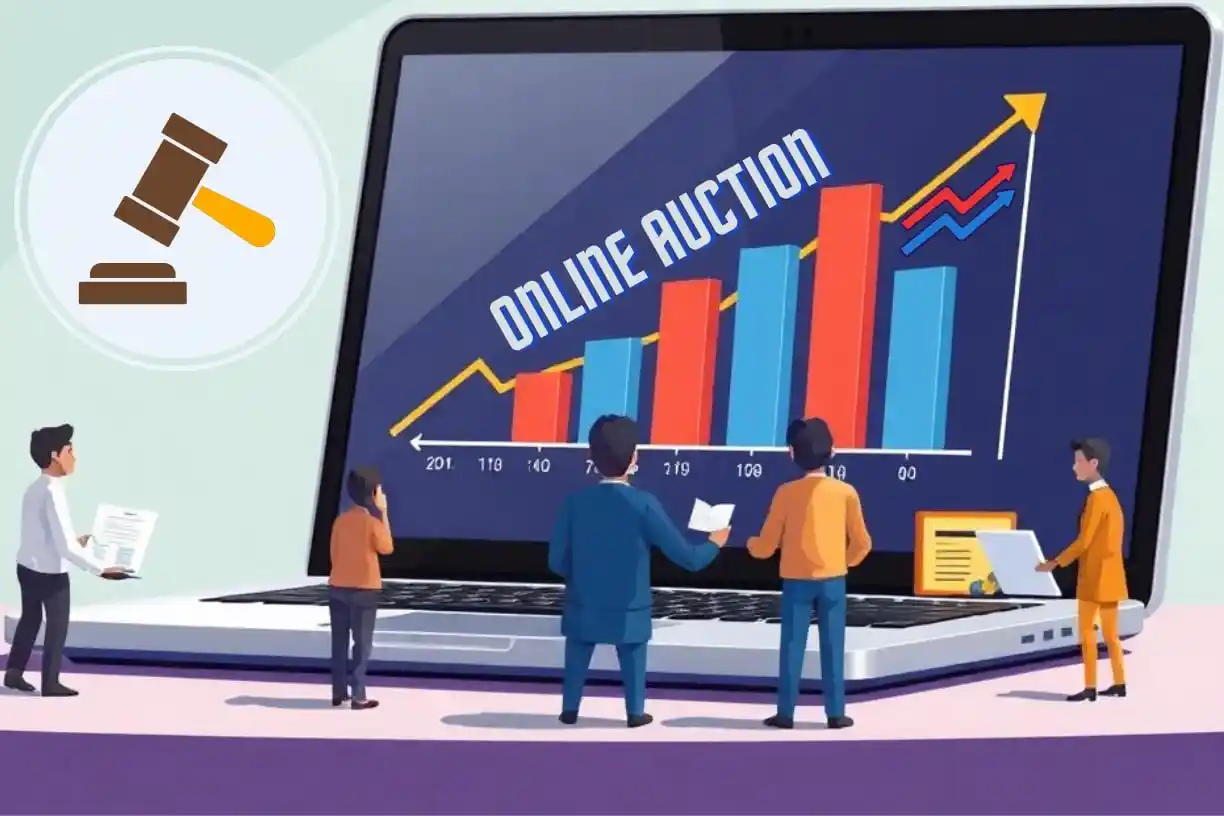
Where Do You Even Get Auction Items?
So, the golden question is where do all these auction-worthy pieces and gift cards come from?
You ask. Nicely. Repeatedly.
Start with:
- Artists who’ve exhibited in your gallery (many are happy to support with a piece)
- Local businesses (cafes, spas, boutique hotels) who’d benefit from exposure
- Board members or patrons with connections (that one member with the vineyard? Ask them)
- Your own network
When you ask, be specific: “Would you be open to donating a weekend stay or dinner for two?” is better than “Got anything we can use?”
And make it easy for them. Offer visibility in your catalog or a shoutout at the event. Most donors just want to be seen supporting the arts.
Special Offer – Limited Time Only!
Rev Up Your Savings: Get 10% off Essential Ultimate Auction Software!
Fill the form and receive directly to your mailbox a discount code.
"*" indicates required fields
A Few Extra Pointers Before You Go
- Timing matters. Don’t keep the auction open too long. A few hours or a few days (for online) is plenty. Any longer and interest fades.
- Announce last calls. Whether it’s on a mic or via email blast, let folks know when it’s almost over. That last 10-minute frenzy? That’s where the money is.
- No funny business. Make your rules clear: no bid retractions, no tie-breaking arguments. Post it. Stick to it.
Final Thoughts
Silent auctions are here to raise money by drawing people into your gallery in a new and relaxed way. They give guests a reason to slow down, engage with the art, and feel part of something.
If you’re running the whole thing manually, it can feel like a lot. Chasing bids, printing sheets, tracking who won what. But with auction software like Ultimate Auction, you don’t have to do it all yourself. You get real-time bidding updates, automatic increments, proxy bidding options, time-based auction control, and clear dashboards that show you what’s working. Plus, it’s flexible enough to handle everything from one-night events to weeklong online auctions.
So if you’re a gallery owner or manager who wants to run silent auctions, go for an auction marketplace software today.
Easily Manage Silent Auctions for Art Gallery with Our Software
Trusted by thousands of users to take the best deals on their art work. Try the demo today.

Frequently Asked Questions
We all want to get great deals on furniture, electronics, or even cars without leaving our home. That’s exactly what Nellis Auction makes possible. If you’re wondering how does Nellis Auction work, it’s a marketplace where people can buy and sell all kinds of items. You can browse through their listings online or even visit one of their physical locations if you prefer. The best part? You don’t need to live near a Nellis Auction site to take part because you can join from anywhere.
The reason so many people love Nellis Auction is due to their easy to understand process and the rules are clear. There aren’t any hidden steps or confusing fine print. Whether you want to grab a bargain or sell items you no longer need, Nellis Auction does this.
They also host special bidding events for unique items that always attract a lot of attention. If you’re a first-time buyer or seller, their staff is ready to help you understand how everything works. Over the years, Nellis Auction has built a solid reputation for being fair and well-organized.
How does Nellis Auction Work?
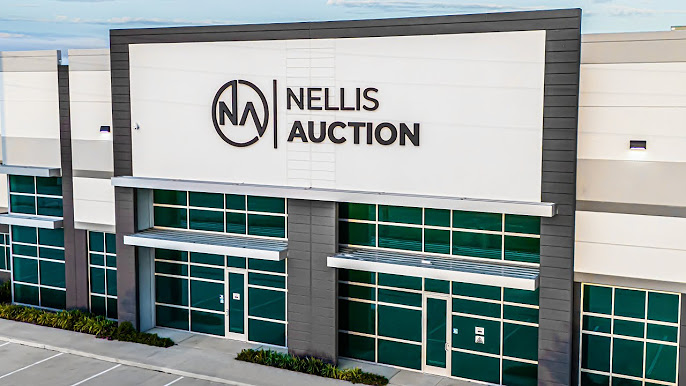
We are going to highlight all the steps to make you understand Nellis auction.
- Register on the Nellis Auction Website
You need to create an account on the official Nellis auction website and it will take a few minutes. Once your account is ready, you can place bids, track your auctions, and manage your purchases. The registration process is very simple with on-screen instructions for each step.
- Browse the Auction Items
Nellis Auction has a huge list of items for online auction. There are categories to filter out the items you are searching for. This helps to narrow down your options without wasting too much time.
- Check the Item Details
Now it’s time to figure out what you are checking out. Nellis auction platform will show all the details of the item you are bidding on. There are high-quality photos, brief descriptions, and current condition of the product. These checks will avoid any unexpected surprises after the auction ends. Take a few minutes to review this information to save you from any disappointment later.
- Place Your Bid
Once you have found the relevant item, you can use the bid button and see the live progress. It will go on till the auction ends along with other bids coming in. If someone outbids you, feel free to increase your bid.
- Payment Confirmation If You Win the Auction
If you are the highest bidder when the auction comes to an end, Nellis Auction will send you a notification with the total amount due. You can choose from different payment methods. It’s important to pay within the given time to complete your purchase.
- Arrange for Pickup or Shipping
You can now decide how to get your item to your home. If you are local, you can pick it up directly from one of Nellis Auction’s locations. For those who are living far away, there are shipping options available. Nellis Auction will handle the logistics on your behalf.
How Does Nellis Auction Work for Sellers?
If you are a seller who has something to sell, you can create a seller account on Nellis Auction website. Here’s a step-by-step process on the same.
- Create an Account
Start off by registering yourself on the Nellis Auction website. This account will serve as your dashboard for listing items, tracking bids, and managing the auction sales.
- Prepare Your Items
Gather the items you wish to sell and keep them pretty clean with good working conditions. Take high-quality photos from multiple angles to show every angle for the product you want to auction.
- List Your Items
There is a listing section available in your profile dashboard. You will have to give detailed descriptions for the item you are trying to auction. It should include important details like the brand, model, current condition, any defects, etc. Then set up a starting bid and choose the auction timeline.
- Monitor Your Auctions
Once your items are live and approved by the Nellis team for the auction, start monitoring the bidding activity. It’s important that you respond promptly to any questions from bidders to have a greater chance of building trust and selling the items.
- Finalize the Sale
As soon as the auction comes to an end, you will see the highest bidder and the amount. Nellis Auction will handle the payment for your behalf. He will get your contact details so that the item pickup or shipping arrangements can be done after the payment.
Once the transaction gets complete, Nellis Auction will release your payment directly to your bank account. Your responsibility is to make sure that the item is delivered as promised to maintain a positive seller rating.
Special Offer – Limited Time Only!
Rev Up Your Savings: Get 10% off Essential Ultimate Auction Software!
Fill the form and receive directly to your mailbox a discount code.
"*" indicates required fields
How Does Nellis Auction Work: Can Sellers Raise Bids?
This is a pretty common question among bidders who want to buy the items for a reduced price. So, can sellers really increase the price on their own items? The answer is a straight-up no. Nellis Auction has strict rules to keep things fair for everyone. Sellers are not allowed to place bids on their own stuff at all. It’s kind of like playing poker with yourself as it just doesn’t make sense and it’s not fair to the other players.
Nellis Auction has automated systems to detect any fraudulent activity or business. If someone tries to cheat by bidding on their own item, they can get banned from future auctions. This keeps the entire bidding process fair and transparent for everyone involved. Imagine you’re bidding on a cool vintage camera, and you find out later that the seller was increasing the price. That wouldn’t feel right, would it? Will Nellis Auction, that’s never going to happen.
The seller can watch the bidding but they can’t come in between and increase the price. This is what makes the platform trustworthy. You know that when you place a bid, you are competing against real people.
Manage Unsold Inventory with Liqudity Services Auction platform
Use Our Excellent Auction Software can help you to use your inventory with ease.

What Happens if Sniping is Detected at Nellis Auction?
Sniping is when someone places a bid at the very last second. It is a deliberate process to win an auction without giving others time to increase their bids. Nellis Auction has strict measures to prevent this from happening. The bidding system is designed to extend the auction time if a bid is placed near the end time. This will not only help to keep the auction fair, but also give extra time to other bidders without feeling rushed.
So, you don’t have to worry about losing an item just because someone had their bid at the last second. Nellis Auction will give everyone a fair chance to place their bids.
How Does Nellis Auction Work: Where the Inventory Comes From
Ever wondered where all those items at Nellis Auction come from? It’s a pretty interesting mix with the Nellis Auction team getting its inventory from all kinds of sources. You might find things from store returns, liquidation sales, or even business closeouts. Sometimes, when a business shuts down due to any reason, all the leftover stock ends up at auction.
Because of these different sources, there’s always something unique available for bidders. You might come across a brand-new TV in the auction that was part of a store liquidation. It’s way different from shopping at a regular store where everything is predictable.
Nellis Auction has a dedicated team to check the quality of items before they allow for bidding. They want buyers to know exactly what they are getting. You can read descriptions, look at the close up photos, and read any defects. The goal is to give you exactly what you saw without you being surprised when you get the item.
Buyer’s Premium and Proxy Bidding at Nellis Auction
Any bid placed at Nellis Auction will have a small extra fee added to your total amount. This is called the Buyer’s Premium. It’s a small % of the final bid amount that gets added to the total price. This fee is used to cover the costs of running the auction, website maintenance, and paying salaries to the team. Buyer’s can term it as a service fee for running the whole auction process.
For example, if you win an item for $100 and the buyer’s premium is 10%, you’ll pay a total of $110. It’s important to keep this in mind when you’re setting your bid expectations. Nellis Auction is very clear about the buyer’s premium, so it shows it before you place your bid. There are no surprises when it’s time to pay.
How Does Proxy Bidding Work?
Proxy Bidding can help you in case you don’t want to be online every time something happens in the auction. This feature lets you set your maximum bid amount in advance. Once you’ve set it, you can be ahead of other bidders once the bid amount reaches higher than yours.
Let’s say you’re willing to pay up to $200 for a particular item. You set your proxy bid at $200, and the auction begins. If someone bids $150, the system will automatically place a bid for you slightly higher at $155. This continues until your maximum limit is reached or you win the item. You don’t even have to be online for it to work for you.
The Technology Behind Nellis Auction
Nellis Auction uses online auction software to manage the entire process from start to finish. Basically, using an online auction software gives you functionalities for bidding, tracking, payments, notifications, customer support, etc.
If you are looking to create a new auction website, it’s pretty simple to do so by using Auction MarketPlace Software. It is one of the leading online auction software used by many websites for running their auctions. You too can launch your own auction marketplace within a few days by using the software. Here are the functionalities you get.
- Stunning Pre-Built Templates: You can easily choose from a ready-made collection of templates for your homepage, listing pages, and product pages. These templates are designed to make your auction site look professional and user-friendly. You can also personalize your header, footer, fonts, and more to match your brand’s style. This gives your auction platform a distinct look from others.
- Proxy Bidding: Ultimate Auction’s software allows bidders to set a maximum amount to automatically place bids for them. This is useful for users to bid without constantly monitoring the auction.
- Buy Instantly and Q&A Options: The platform supports an instant “Buy Now” feature for those who want to purchase items without waiting. It also has comments and Q&A sections for buyers and sellers.
- Seller-Friendly Dashboard and Commissions: Sellers can now manage their listings with ease. They can track bids, update listings, and receive payments in their bank accounts. The platform also supports automatic commission payouts.
- Multiple Payment Gateway Support: This gives buyers the option to pay with their preferred method. Use credit card, debit card, wallets, net banking, etc.
- Global Reach with Multilingual Support: Get your auction marketplace worldwide with multilingual support. The platform is translation-ready and works seamlessly to operate in multiple languages.
Manage Unsold Inventory with Liqudity Services Auction platform
Use Our Excellent Auction Software can help you to use your inventory with ease.

Frequently Asked Questions
Salvage auctions are growing fast—and not just for bargain hunters. Investors, repair shops, and resellers are recognising the immense margins in this space. Whether it’s a car, truck, or even an aircraft salvage auction, these events offer opportunities to buy high-value assets at deep discounts. When a vehicle is written off by insurance or retired by a fleet, it often ends up here, sold to the highest bidder online. You’re not just competing on price—you’re racing to filter what’s worth the investment and what might drain your wallet.
So, we are going to help you understand how to buy salvage aircraft & cars at auction. It’s not hard to find a deal. It’s hard to know if that deal is real.
What Defines ‘Salvage’ at an Aircraft Salvage Auction?
The word “salvage” means it’s taken a hit and it is generally due to financing issues.
In simple terms, a vehicle becomes salvage when the cost to repair it is more than its resale value. That doesn’t always mean it’s beyond repair. But it does mean someone like an insurer has decided it wasn’t worth fixing under the basic standard rates.
Common reasons something becomes salvage:
- Collision damage
- Flood or fire exposure
- Theft recovery with missing parts
- Vandalism or hail damage
- Retirement after service life ends
For cars, that’s usually followed by a “salvage title.” For aircraft, the rules may vary but phrases like “written off” or “not airworthy” will show up. And that label sticks. Even if it gets repaired, it always carries a mark.
What Aircraft Salvage Auctions Mean for You as a Buyer
Buying a salvage car from auction means lower cost upfront. But it also means more work. You need to know what’s behind that price. Because no matter how good it looks in the photos if you’re not careful you’re buying a problem not a project.
Here’s what changes once it’s marked salvage:
- Title restrictions: Many states have rules around rebuilt titles
- Insurance issues: Some companies won’t cover rebuilt units
- Resale trouble: Value drops and buyers become cautious
- Hidden problems: Cosmetic fixes can hide major faults
That doesn’t make it a bad buy but just means you need to look twice before making a decision.
Who Sells in Aircraft Salvage Auction And Why
You’ll find salvage vehicles coming from all corners. Any aircraft salvage auction has many bidders and sellers with the most common ones mentioned below.
- Insurance companies: Total-loss write-offs
- Banks: Repossessions with damage
- Rental and leasing companies: Retired assets with wear
- Government fleets: Older units or decommissioned aircraft
- Auction houses: Bulk sales from businesses or liquidation firms
Each source tells you something about the history.
- A car from a rental fleet might have high mileage and wear.
- A recovered theft could be missing parts but mechanically sound.
- A government plane might be old but well-documented.
The smart move? Match the source to your own risk level.
Where Vehicles from Aircraft Salvage Auctions End Up
You don’t need an invite to get in. The aviation salvage auction is a public event in most cases and they happen online. So, if you are buying a salvage car from auction, you can find them at below sites.
Popular auction platforms for cars include:
- Copart
- IAAI
- AutoBidMaster
- Salvagebid
For aircraft salvage auctions, the listings are a little more niche:
- GSA Auctions (government)
- GovDeals (state and city assets)
- Government Liquidation (older military and federal stock)
Some platforms require a membership, some charge fees per bid and some let you buy with a single click. What they all have in common: limited time, fast bidding, and little room for second guesses while buying a salvage car from auction.
Be cautious if you see:
- Phrases like “runs and drives” with no proof
- Missing interior or undercarriage photos
- Only one image
- “As-is” with no condition notes
- Delays in title transfer
The difference between a deal and a disaster usually hides in the small details.
Aircraft Salvage Auction Costs: What to Expect
The bid price is just part of the cost in any aircraft salvage auction. Every auction has fees that may vary between 10 to 15% as a buyer’s premium. Others add transport, loading, paperwork, and admin charges.
Common extra costs:
- Towing or shipping (can run high for aircraft)
- Title and registration
- Repairs and inspections
- Storage if you don’t collect fast
- Taxes based on location
Special Offer – Limited Time Only!
Rev Up Your Savings: Get 10% off Essential Ultimate Auction Software!
Fill the form and receive directly to your mailbox a discount code.
"*" indicates required fields
The Winning Happens Before the Aircraft Salvage Auction Starts
Most people lose money before they even win the auction. Why? Because they don’t do the prep and they skip the homework. They see a good listing, place a bid, and hope for the best.
That’s not buying, that’s actually guessing. If you want to avoid regrets, you need to slow down before you speed up.
Always Start With a Title Check
The biggest red flag in salvage is a title problem. If you’re buying a salvage car from auction, check the title status through the VIN. If you’re looking at aircraft salvage auctions, verify the tail number or FAA registration.
You’re looking for:
- Salvage or rebuilt titles
- Branded titles (flood, fire, lemon)
- Export-only restrictions
- Missing ownership documents
- Long title delays or lien disputes
Pro tip: If the listing doesn’t show a title upfront, walk away. No matter how good the deal sounds, no title = no resale.
Map Out Your Real Cost in Aviation Salvage Auction
What you bid isn’t what you’ll pay. Every auction has a fee structure. Some add up fast.
Here’s what you’ll want to account for:
- Auction buyer fee
- Admin or paperwork charge
- Sales tax (based on where you’re located)
- Towing or flatbed cost
- Storage fees if you don’t pick up in time
- Repair estimates both parts and labor
Get a full quote before bidding. If it’s a car, call a shop and if it’s an aircraft, check with a certified mechanic or repair station. If you can’t get a repair estimate, assume it’s higher than you think.
Then move to the listing info. Read carefully for:
- “Run & drive” vs “starts only”
- Airbag deployed notes
- Frame damage alerts
- Secondary damage fields
If something seems vague, it’s vague on purpose.
You Can Hire a Pre-Bid Inspector

If you’re bidding remotely, don’t rely on photos alone for buying a salvage car from auction. You can hire an AI-powered damage detection company that inspect vehicles on-site before you place your bid. They’ll send photos, condition reports, and even flag hidden issues using advance AI technology with high accuracy.
Yes, it costs extra, but it’s not optional if you’re serious. $100 on a pre-bid check can save $5,000 in surprises.
Tech Tip: Start Your Own Car Auction Software
As you might have seen, there are lots of fees and commissions from both sides when you are running a car or aircraft salvage auction. So, if you are a seller, then why not have your own website and avoid the commissions paid for listing. Yes, it’s pretty much possible using the best car auction software offering all the functionalities you need.
Here are the features you get:
- You can easily set up your own car auction website. It is simple to use and helps you earn money. People can sell their cars or bid for their dream car without trouble.
- Selling a car is easy with a short form. Sellers just upload car details and photos. After review, the team approves the car for auction.
- Once the listing is live, buyers can start placing bids. They register by giving basic details like email and phone number. Bidding happens in real-time for everyone.
- When the auction ends, the highest bidder and the seller are informed. They arrange payment and delivery on their own. This keeps things fast and simple.
- Site owners earn a fee when a car is sold. The system collects the fee from the winning bidder’s card. It then sends the money to the owner’s account.
- Buyers and sellers get each other’s contact details. They can quickly talk and finish the deal. This makes the process smooth.
- The software lets you choose from different payment options.
Start your own Salvage vehicle auction website today
Use Our top-rated car auction software has all the features you need.

Want to Start a Car Auction Website?
Are you someone who sells cars and looking to create your own car auction website? Our car auction software can help you build a simple and powerful website for buying and selling cars.
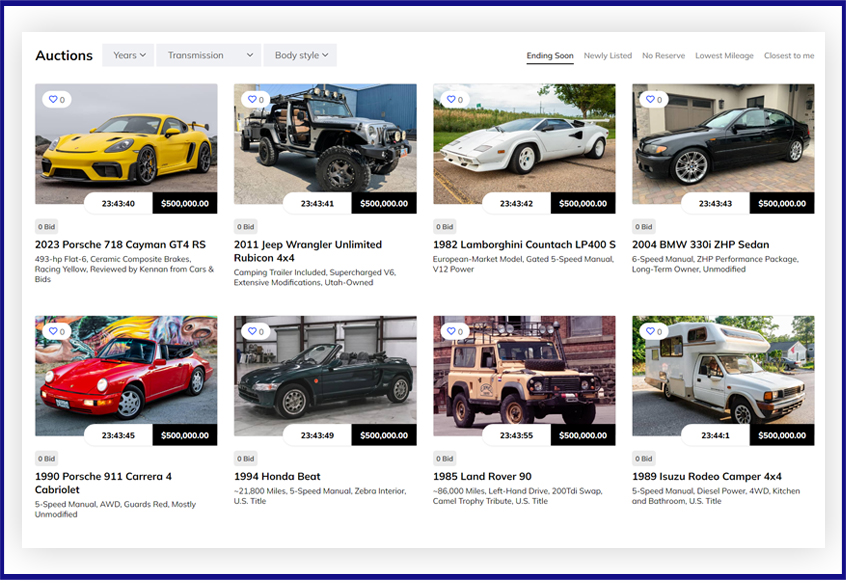
Easy-to-Use Design with Helpful Filters
The website looks professional and is easy to use. You can search for cars using different filters like price, brand, model, and more. Whether you’re new or experienced, you’ll find the site simple to navigate.
Show Off Cars with Pictures and Galleries
You can upload clear pictures of each car so buyers know exactly what they’re getting. This makes the cars more appealing and helps sell them faster.
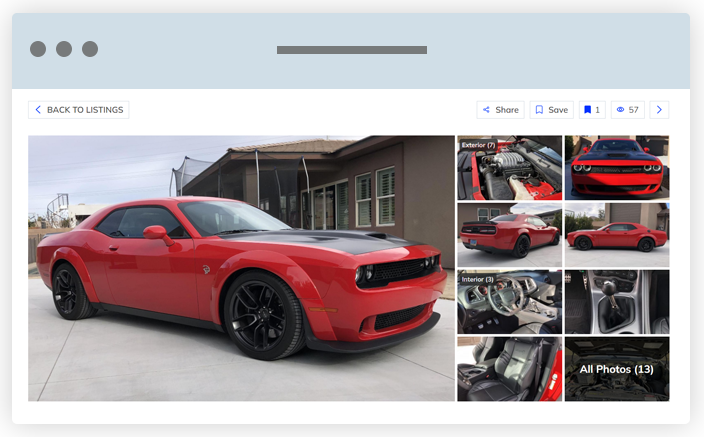
Make Money with Buyer Fees
The system adds a small fee to the final sale price. This helps keep things fair and clear for both sellers and buyers. It’s a smart way to earn a bit extra with every sale.
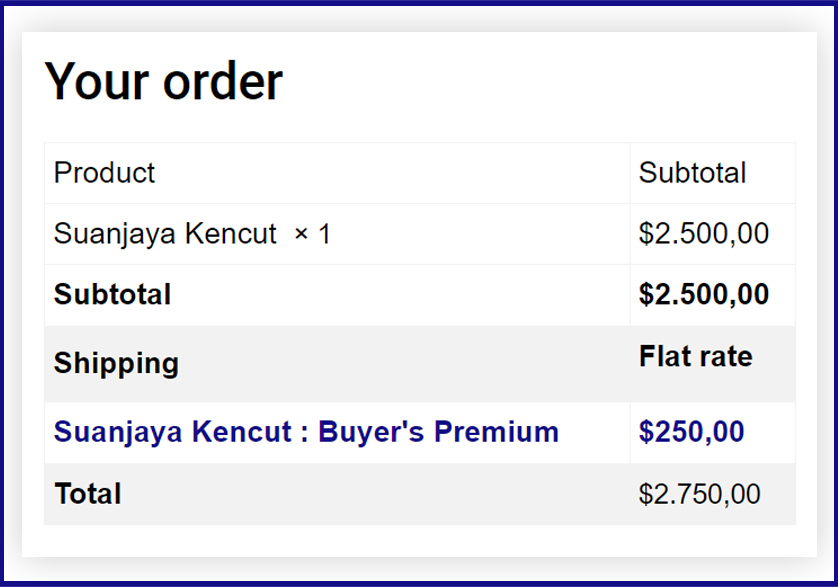
Automatic Payment After Auction Ends
When someone wins a car auction, their credit card is charged right away. This saves time, avoids delays, and makes sure sellers get paid quickly. No chasing buyers for payment.
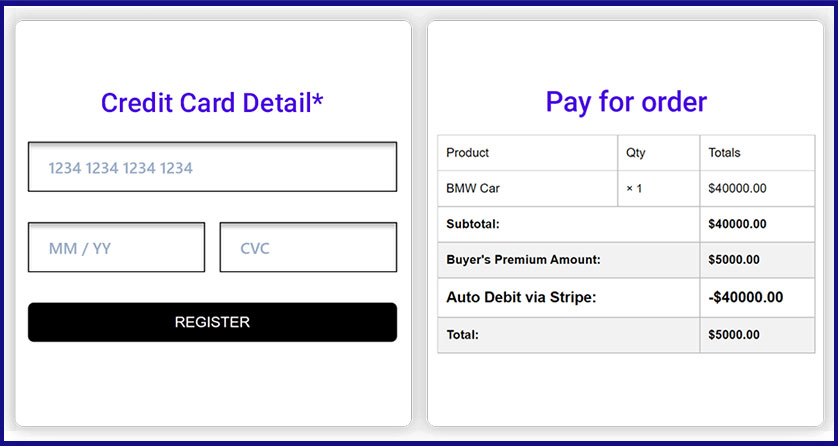
Let Sellers List Their Cars Easily
Sellers can fill out a simple form to list their cars. It asks for the important details and helps them post their vehicles quickly. This makes it easier to get more cars on your site and attract more buyers.
Final Tips for First-Time Bidders
You must be thinking now I know how to buy salvage aircraft & cars at auction. So you might be tempted to jump into salvage auctions? It’s smart but don’t rush.
Here’s a checklist to keep an eye on in the aviation salvage auction.
- Be cautious, not scared – Risk is part of the game, but it’s manageable
- Learn the lingo – Know your “clean title” from your “certificate of destruction”
- Study every listing – Don’t trust a single image or vague description
- Never skip the inspection – Even a quick look can save thousands
And above all, the best buyers are always the best-informed. The right tools make that easy for you.
Start your own Salvage vehicle auction website today
Use Our top-rated car auction software has all the features you need.

